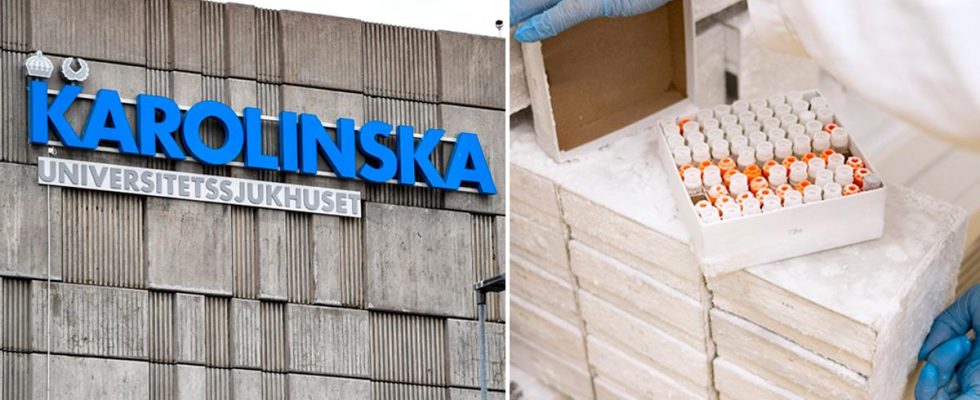unsaveSave
expand-left
full screen The freezers stopped working during the Christmas holiday. Photo: Erik Simander/TT / TT News Agency
The freezers at Karolinska Institutet broke down during the Christmas holiday.
For an unknown reason, the automatic nitrogen system stopped working.
– It is a total disaster, this is the heart of KI’s operations, says Matti Sällberg, dean of KI Campus South and spokesperson in the case.
After the Christmas freezer failure at the Karolinska Institutet in Flemingsberg, rumors spread about “deliberate sabotage”, says Elizabeth Raschperger, researcher and director of the affected department.
– I want to emphasize that there are currently no such indications, and appeal to everyone to wait for the investigation’s upcoming conclusions, she says in a statement.
A very large amount of research material with samples, cell lines and biomaterials collected over decades may have been lost. Something that will have major consequences for the department’s research, writes Karolinska Institutet.
– This must not happen. We must learn from this, it must not happen again, says Matti Sällberg.
Want to report the incident to the police
An accident investigation is underway which will investigate the cause behind the accident, both regarding the technology and the organization. Internal and external parties are involved.
Karolinska wants to report the incident to the police in order to ensure that it is not deliberate sabotage.
expand-left
full screen Matti Sällberg, dean of KI Campus South. Photo: Carl-Olof Zimmerman/TT / TT News Agency
On 22 December, a freezer failure occurred in the Neo building on Karolinska Institutet’s campus. Neo is a building for experimental biomedical research and education in Flemingsberg.
Biomaterials and cell lines are stored in cryotanks infoclose cryotanks Cryotanks are containers that can store gases in liquid form, for example nitrogen or helium., need to be filled every four days with liquid nitrogen in order to maintain the temperature of -190 degrees.
It should be done automatically, but during the evening there was no refill. No one knows why, but the result was that the temperature rose in 16 of 19 cryotanks, destroying the material inside them.
Matti Sällberg believes that the material that was lost can be saved, and that it may be possible to save some material.
– But it is not certain. It is now being investigated, he says.
Sällberg: “It’s bad”
He thinks it is tragic that the accident happened, both for the researchers and the patients involved.
– However, it is important to clarify that these are exclusively research samples from patients stored in biobanks. This does not affect patient treatment, only research. But that’s bad enough.
Maria Eriksdotter, former dean at KI Syd, says that KI must build a coordinated and robust system so that this never happens again.
– We must also in word and deed support our colleagues who have lost years of hard work and extensive and unique research material.
expand-left
full screen Archive image of frozen samples at KI. Photo: Henrik Montgomery/TT / TT News Agency
